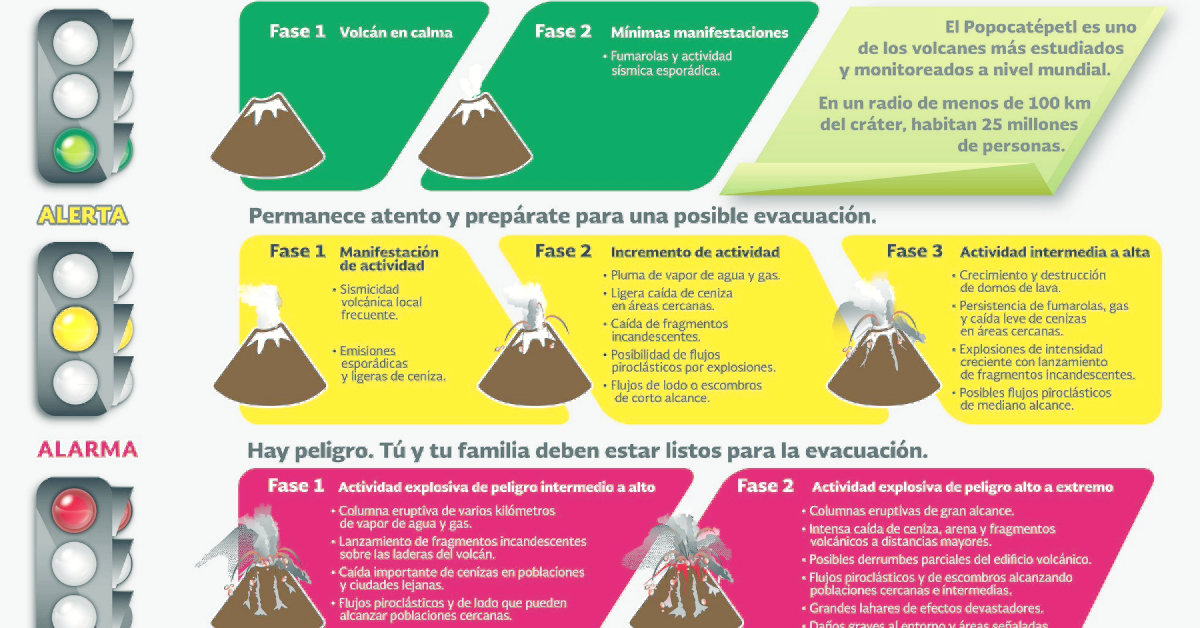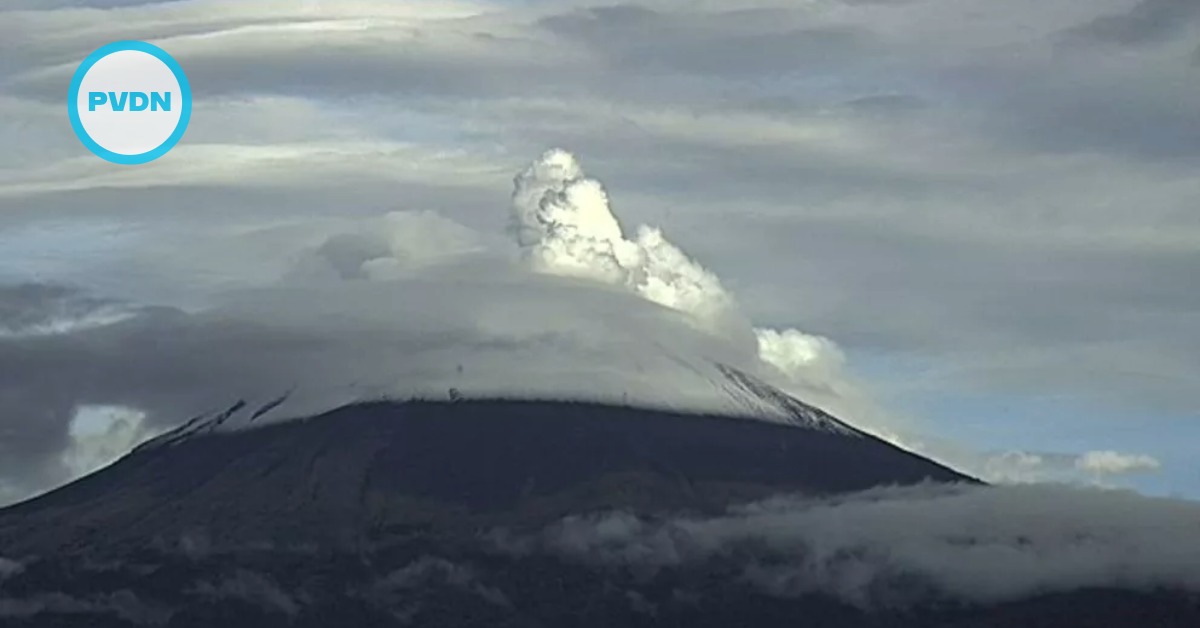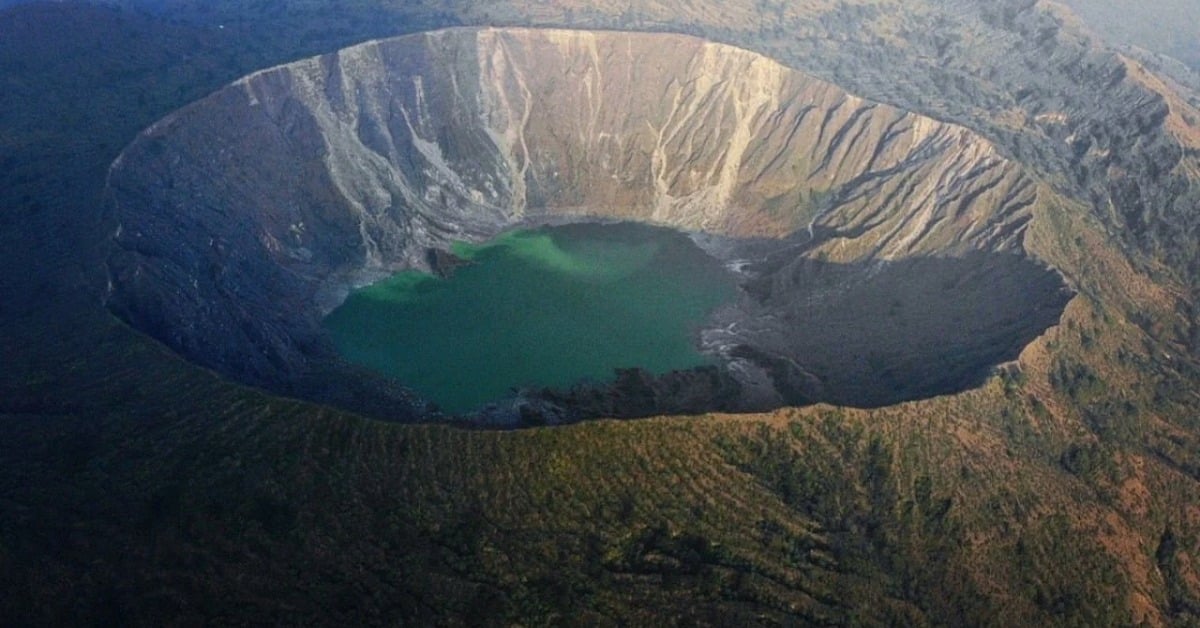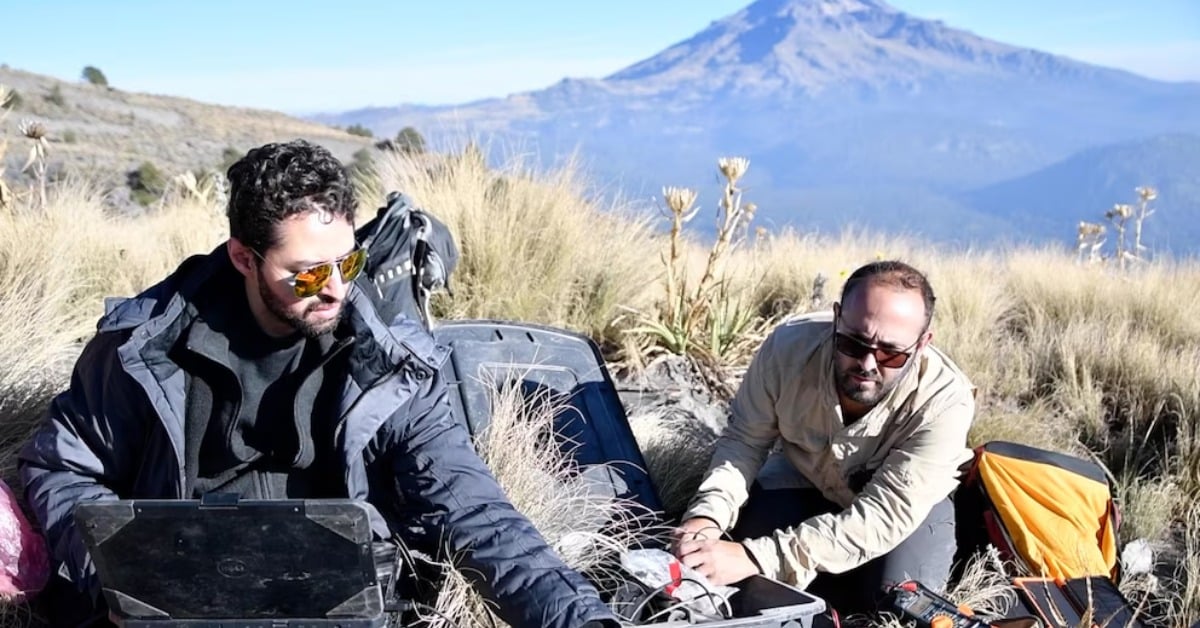Puerto Vallarta (PVDN) - The Popocatepetl volcano in Mexico has reawakened this week, emitting massive ash clouds that prompted school cancellations in 11 villages and the temporary closure of Mexico City and Puebla Airports over the weekend.
The National Coordination of Civil Protection reported today that the volcanic alert traffic light goes up from Yellow Phase 2 to Yellow Phase 3, due to the activity of Popocatépetl.
Its resurgence has not gone unnoticed. A plethora of scientists, an expansive network of sensors and cameras, along with a suite of high-tech equipment constantly monitor the volcano, affectionately known as "El Popo". Since its reactivation in 1994 after a lengthy period of dormancy, the 5,426-meter (17,797-foot) high peak has been continuously emitting toxic fumes, ash, and incandescent rock.







